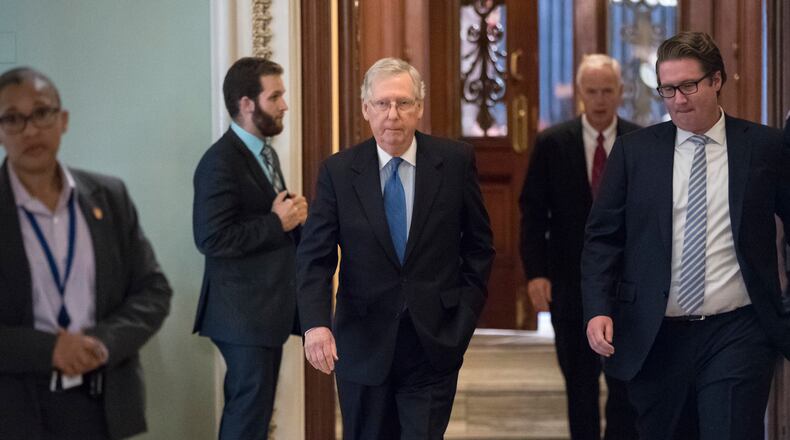Tax reform is moving forward after the Senate on Thursday approved a budget resolution authorizing up to $1.5 trillion in new deficits over the next 10 years. This leaves a number of people uneasy about the nation's finances, as it should after Republicans spent the Obama years (rightly) railing against deficits and debt.
The question is whether meaningful tax reform can be done that doesn't significantly increase the deficit. And the answer is yes.
Jeffrey Dorfman, an economics professor at the University of Georgia and regular contributor to Forbes, recently explained at National Review why lowering the rate is more important than lowering revenues if the goal is growth (as it should be). Here's an excerpt:
"When it comes to the corporate income tax, rate cuts not only spur growth but raise wages as well. Glenn Hubbard, dean of the Columbia Business School and a former head of the White House Council of Economic Advisors, has written that 70 percent of corporate tax cuts may go to higher wages instead of payouts to shareholders. Other research has suggested a range of 45 to 75 percent.
"This idea, that cutting taxes on corporations actually benefits workers along with shareholders, is more controversial and much less appreciated. However, among experts in the field it seems to be a reasonably well-shared and non-partisan view. This is important because the more middle-class workers benefit from cuts to corporate tax rates, the more such cuts are consistent with the ideals of a progressive tax system.
"What about the idea of bringing in less tax revenue overall, providing a stimulus to the economy by letting people keep more of their money? A bevy of central-bank research economists from around the world studied the effects of fiscal stimulus (including tax cuts and deficit spending) in the wake of the most recent recession. Their research shows that larger deficits don't stimulate the economy much, particularly when the deficits are seen as permanent (as they would be from a tax cut) and when the Federal Reserve is not accommodating. Accommodation from the Fed typically involves interest-rate cuts, in contrast to the Fed's current posture of slowly increasing rates. Given that the Fed is unlikely to meet this tax-reform package with monetary accommodation, central-bank models suggest that the size of the tax cut will not determine how pro-growth tax reform is; it is rate cuts that matter." (links original)
Read the whole thing for a fuller explanation, but here's Dorfman's bottom line: "Republicans should prioritize rate cuts: Get the marginal rates for individuals and corporations down so that we can get back to more normal levels of economic growth, and broaden the base enough to make the changes revenue-neutral or at least close to it." That's exactly right.
While we're talking about tax cuts and deficits, it's a good time to remind my conservative friends that the line that "tax cuts pay for themselves" is not always or even usually true, especially in the short term. The Laffer Curve is one of the left's favorite things to lampoon, but that's because they have failed to appreciate it for what it is, just as too many conservatives have. The Laffer Curve does not say all tax cuts produce more revenue; far from it. It simply makes visual an obvious truism: At a rate of zero percent the government would collect no tax revenue, but this is also true at a rate of 100 percent (because no one would bother to work if all their earnings went to the government). You can't connect the two with a straight line, since we know the government collects tax revenue from rates between zero and 100, so there has to be a curve. Revenues rise up from zero to a maximum point, and then start falling again toward 100, because behavior changes in response to policy.
While this is obviously true, there's an enormous problem: At any given time, we don't know where we are on the curve. As you'll notice, the above graphic not only doesn't define the rates at which revenue rises or falls; it also illustrates that the curve could shift to the left or the right. That's why the Laffer Curve tells us that revenue could rise or fall as rates change, but it can't tell us which is going to happen.
Static scoring of tax policy fails to capture the behavioral effects of the policy -- with the ridiculous result, in the extreme, of forecasting more revenue from a 100 percent tax rate (as the Congressional Budget Office once infamously projected ). Dynamic scoring attempts to capture these effects, but it's often inaccurate because it's very hard to forecast exactly how people will respond to tax changes -- especially when we are talking about the entire nation.
All the more reason, given our precarious national finances, to focus on lowering rates rather than on lowering revenues. Improve the incentives to work and invest, and the resulting economic growth should be good for both workers and government revenues in the long run.
About the Author
The Latest
Featured



